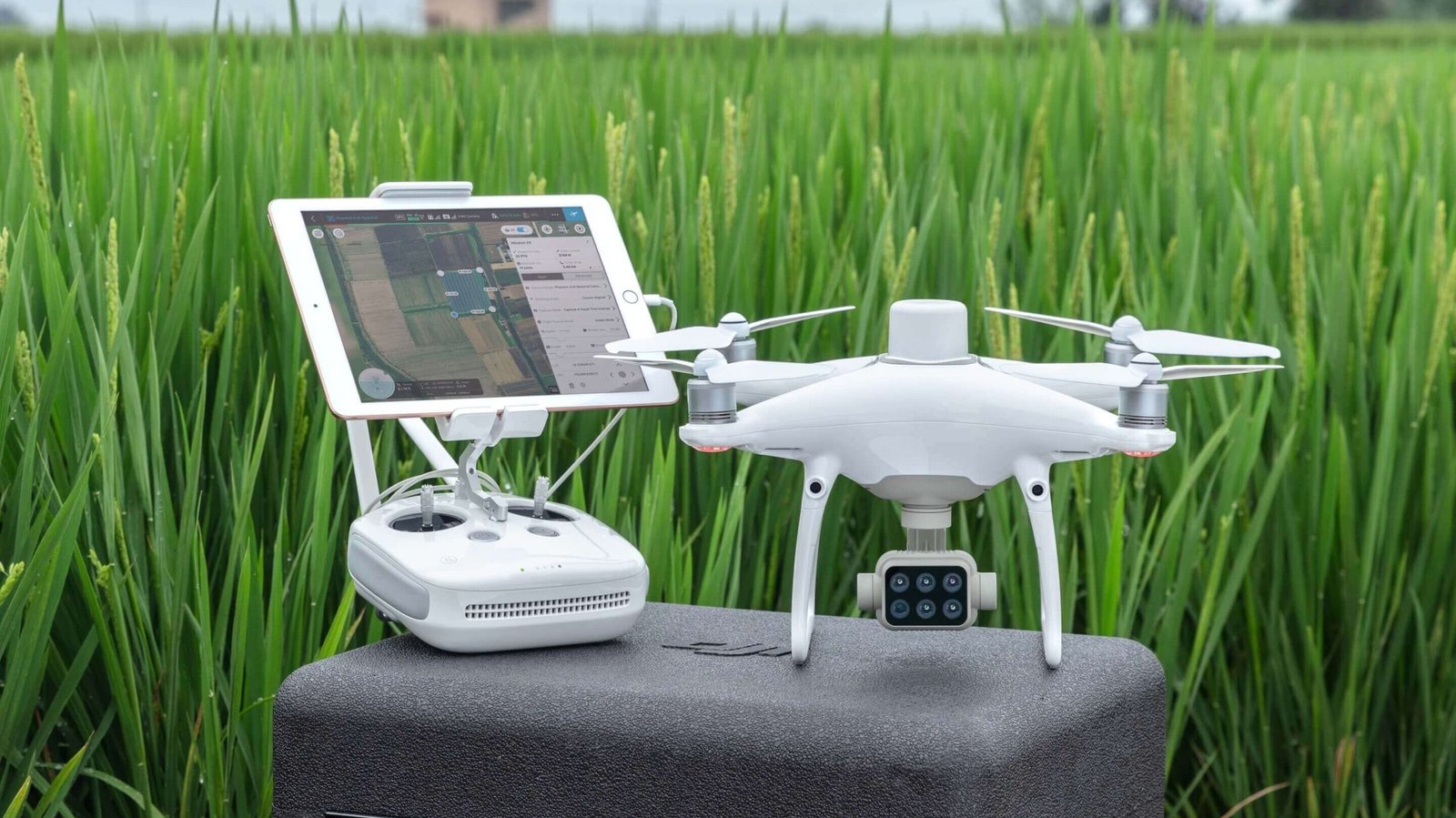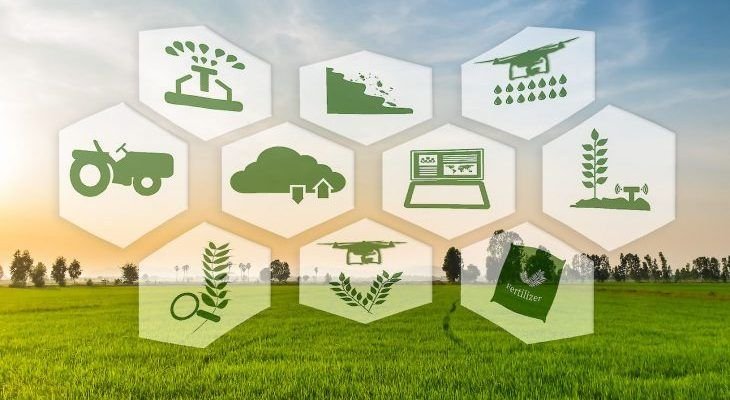Explore the dynamic world of modern agriculture with 5 cutting-edge technologies revolutionizing modern farming and shaping a sustainable future.
The domain of agriculture has always been a cradle of evolution, reflecting humanity’s innovative spirit. Modern farming is no exception, embracing technology like never before. As we delve into the realm of advanced methodologies, we uncover five cutting-edge technologies steering this sector towards unprecedented heights of efficiency and sustainability.
5 Cutting-Edge Technologies Revolutionizing Modern Farming
The fusion of technology and agriculture has given birth to new dimensions in farming. The realm has expanded beyond traditional practices, paving the way for a revolution that’s redefining the agricultural landscape. These advancements promise a future where farming is not only sustainable and efficient but also lucrative for farmers.
Drones: The Eye in the Sky for Farmers

Drones, often regarded as mere gadgets for photography enthusiasts, have found profound relevance in modern farming. These flying devices are transforming agricultural management, offering farmers a bird’s-eye view of their land, a perspective that was previously expensive or impossible to obtain. From soil analysis and planting to crop monitoring and irrigation management, drones provide critical data contributing to informed decision-making.
Benefits of Agricultural Drones
Employing drones simplifies numerous farming tasks. Their ability to cover large areas in a short time makes them perfect for tasks such as monitoring crop health, assessing irrigation systems, and determining problem areas needing attention. Moreover, they reduce the workload, save time, and, by extension, cut down operational costs.
Integrating Drones into Daily Farm Management
Incorporating drones into regular farming operations is seamless and beneficial. With real-time data collection and analysis, farmers can make immediate decisions on planting, pest control, and harvesting. This swift management approach ensures not only the health of current crops but also aids in planning for future planting seasons.
Revolution Through Robotics: Automating Agricultural Practices

The dawn of robotics in agriculture marks a transformative period. Automation is no longer a foreign concept but a growing trend, with machines performing tasks ranging from seeding and harvesting to sorting and packing. These automated systems are not subject to human limitations, and thus operate around the clock, increasing farm productivity unimaginably.
How Self-Driving Tractors are Changing the Farming Landscape
Self-driving tractors offer precision that manual operation can’t match. They follow pre-set paths with minimal deviation, reducing soil compaction, and maximizing crop yield per acre. Additionally, they free up farmers’ time, allowing them to focus on more strategic tasks rather than spending countless hours behind the wheel.
AI in Agriculture: Beyond Human Analysis
Artificial intelligence (AI) in farming is a breakthrough that propels the industry into a new age. AI’s ability to analyze data from various sources enables farmers to predict and make decisions with precision unheard of in traditional farming practices.
Predictive Analytics: Forecasting for Yield Maximization
Predictive analytics harness historical data, weather forecasts, satellite imagery, and more to make accurate predictions about crop yields. This information is vital for planning and helps farmers manage resources effectively, reducing waste, and maximizing output.
AI-Driven Pest Management Strategies
AI introduces intelligent pest management, which significantly reduces crop loss. By analyzing data from the field, AI can predict pest attacks and recommend precise countermeasures, often before pests become a visible problem. This proactive approach is not only more effective but also environmentally friendly compared to reactive pest control methods.
The Internet of Things (IoT) Takes Root in Agriculture

The IoT’s introduction into agriculture creates a network of smart devices that communicate and work together. These devices collect data from the soil, atmosphere, and crops, which is then processed and used to make informed decisions.
Smart Farming: Interconnectivity in the Modern Age
Smart farming is the future, providing a level of interconnectivity that was once a fanciful dream. With devices and sensors communicating in real-time, farmers can monitor various aspects of their farm from anywhere in the world, making immediate decisions that directly impact their crop’s health and yield.
Real-Time Monitoring with IoT
One of the IoT’s standout features is real-time monitoring. Sensors spread across the farm provide live updates on soil moisture, crop growth, and weather conditions. This data allows for timely interventions, potentially saving entire harvests from unforeseen environmental threats.
Data-Driven Decisions: Optimizing Farm Operations
In an industry as variable as agriculture, being able to rely on data rather than intuition is revolutionary. The IoT provides analytics that drive every decision, from when to plant, which crops to grow, how much to water, and when to harvest. This shift not only makes farming more reliable but also significantly more profitable.
Vertical Farming: Breaking Ground with Urban Agriculture

Vertical farming answers the growing need for sustainable agriculture within urban locales. It takes the concept of farming and turns it skyward, utilizing multilevel facilities to grow crops. This innovative approach uses controlled environments to produce food in large quantities without relying on favorable weather or soil quality.
Innovations in Indoor Farming
The technology behind indoor farming is impressive, with hydroponics and aeroponics replacing the need for soil. Plants receive nutrient-rich solutions directly to their roots, all while using less water than in traditional farming. These controlled environments also negate the need for pesticides, as the usual pests are not present.
Sustainability and Efficiency in Vertical Farming Systems
Vertical farming offers a sustainable solution for urban food production. By requiring less space and resources than traditional farming, it presents an efficient way to provide fresh produce in urban settings. The system’s closed environment also means fewer impacts from external factors like weather, leading to more consistent yields.
The Role of LED Lighting in Controlled Environment Agriculture
LED lighting is crucial in indoor farming, providing necessary light without the heat that traditional lamps produce. These lights are energy-efficient, and their spectrum can be adjusted to promote growth, flowering, or fruiting in plants, depending on the current requirements.
CRISPR Technology: The Genesis of Genetic Editing in Crops

CRISPR technology is revolutionizing many fields, with agriculture being no exception. This advanced tool allows for precise genetic editing in plants, enabling the development of crops with desirable traits such as drought tolerance, pest resistance, and enhanced nutritional content.
Tailoring Crops: The Science Behind CRISPR
The precision of CRISPR in editing plant genomes is its biggest asset. Scientists can now target specific traits, tweaking them for improved outcomes. This level of control could lead to breakthroughs in productivity and even solve food security issues in challenging environments.
Biofortification: Addressing Nutritional Deficiencies
One of CRISPR’s applications is biofortification, enhancing the nutritional value of crops. By increasing vitamins and minerals in staple foods, we can combat global malnutrition effectively. This technology does not just increase food quantity but significantly improves its quality.
Ethical Implications of Genetic Modification
While CRISPR offers promising advancements, it also raises ethical questions. The long-term effects of consuming genetically edited foods are unknown, and there’s public concern over potential health implications. Additionally, the technology’s impact on biodiversity and the environment is under scrutiny, necessitating careful regulation.
The Future of Farming is Here
The integration of these cutting-edge technologies marks a transformative era in agriculture. From drones and autonomous vehicles to AI, the IoT, and genetic engineering, modern farming is becoming more sustainable, efficient, and productive. These innovations are not just trends but the foundation of an agricultural revolution that promises to feed the world’s growing population sustainably.
FAQs
How does modern technology increase agricultural productivity? Modern technology streamlines farming operations, utilizes resources efficiently, and improves crop yields through precise monitoring and management practices. It enables farmers to make informed decisions, thereby increasing productivity.
Are autonomous tractors becoming more prevalent? Yes, autonomous tractors are gaining traction due to their efficiency, ability to operate around the clock, and precision in performing farming tasks, thereby reducing human error and increasing productivity.
What are the environmental impacts of vertical farming? Vertical farming positively impacts the environment by using less water, reducing the land required for farming, eliminating agricultural runoff, and decreasing the transportation carbon footprint due to proximity to urban centers.
How is IoT technology improving water management in agriculture? IoT technology enhances water management through real-time monitoring of soil moisture levels, automated irrigation systems, and data-driven water usage, ensuring optimal water use and conservation.
What are the potential risks of using CRISPR in agriculture? Potential risks include unintended genetic changes, biodiversity reduction, unforeseen health effects for consumers, and ethical concerns surrounding genetic modifications without long-term studies.
Can precision agriculture be considered environmentally friendly? Absolutely. Precision agriculture promotes environmental sustainability by optimizing resource use, reducing pesticide and fertilizer overuse, and employing targeted practices that help conserve natural ecosystems.


